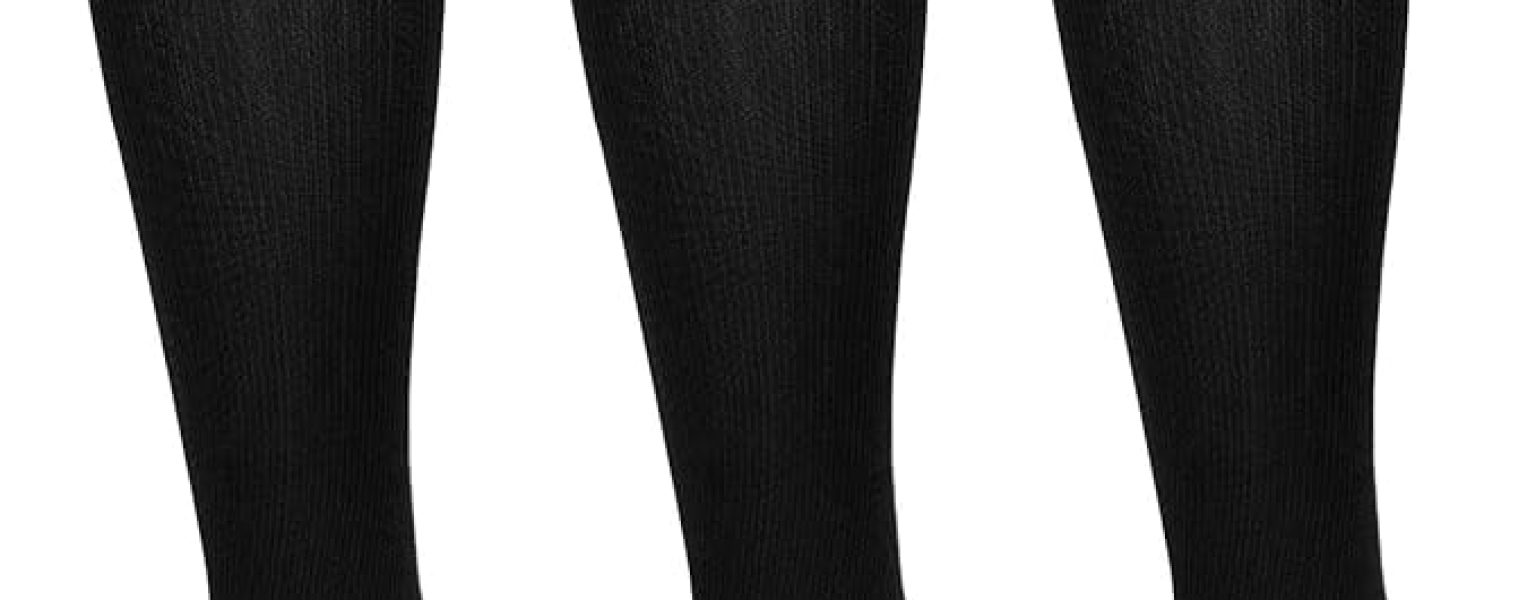Are you planning your next adventure? Whether it’s a long flight or a road trip, one thing you shouldn’t forget to pack is a pair of compression socks. These unassuming socks may not be the hottest fashion item, but they offer a plethora of hidden benefits that can make your travel experience so much more comfortable and enjoyable.
Compression socks work by applying gentle pressure to your legs, helping to improve blood flow and prevent swelling. This is especially important during long periods of sitting or standing, which can lead to issues like deep vein thrombosis (DVT) and leg cramps. By wearing compression socks, you can reduce the risk of these conditions and arrive at your destination feeling refreshed and ready to explore.
But the benefits don’t stop there. Compression socks can also help to regulate body temperature, reduce foot fatigue, and alleviate muscle soreness. Plus, they come in a variety of styles and colors, so you can find a pair that suits your personal style.
Don’t let travel discomfort slow you down. Invest in a pair of compression socks and experience the hidden benefits for yourself. Your legs will thank you!
This post contains affiliate links
How compression socks work
Compression socks work by applying gentle pressure to your legs, helping to improve blood flow and prevent swelling. This is especially important during long periods of sitting or standing, which can lead to issues like deep vein thrombosis (DVT) and leg cramps. By wearing compression socks, you can reduce the risk of these conditions and arrive at your destination feeling refreshed and ready to explore.
Compression socks are designed to provide graduated compression, which means that the pressure is strongest at the ankles and gradually decreases as it moves up the legs. This gradual compression helps to push blood back up towards the heart, preventing it from pooling in the lower legs. This can help to alleviate discomfort and reduce the risk of swelling and varicose veins.
Benefits of wearing compression socks while traveling
Reducing the risk of deep vein thrombosis (DVT)
One of the most significant benefits of wearing compression socks during travel is their ability to reduce the risk of deep vein thrombosis (DVT). DVT is a serious condition that occurs when a blood clot forms in a deep vein, usually in the legs. It can be caused by long periods of sitting or standing, such as during a flight or road trip.
By wearing compression socks, you can help to prevent blood from pooling in the lower legs and reduce the risk of DVT. The gentle pressure exerted by the socks helps to improve blood flow and keep it moving towards the heart, reducing the likelihood of clots forming.
Improving blood circulation and preventing swelling
Another benefit of compression socks is their ability to improve blood circulation and prevent swelling. When you’re sitting or standing for long periods, blood can sometimes pool in the lower legs, leading to discomfort and swelling. Compression socks help to combat this by applying pressure to the legs, helping to push blood back up towards the heart.
Compression socks can help to reduce the risk of leg fatigue and swelling by improving blood circulation, allowing you to arrive at your destination feeling more comfortable and refreshed. This can be especially beneficial if you have a long journey ahead or if you plan on doing a lot of walking and exploring once you arrive.
Alleviating leg pain and discomfort
If you’ve ever experienced leg pain or discomfort during travel, you know how unpleasant it can be. Whether it’s due to sitting for long periods, walking a lot, or even just the pressure changes during a flight, leg pain can put a damper on your travel experience.
Compression socks can help to alleviate leg pain and discomfort by providing support and improving blood flow. The gentle pressure exerted by the socks can help to reduce muscle fatigue and soreness, allowing you to enjoy your travel experience to the fullest.
Reducing the risk of deep vein thrombosis (DVT)
If you’re a frequent traveler and an active individual, you’ll be pleased to know that compression socks can also enhance athletic performance during travel. Whether you’re planning on going for a run, hitting the gym, or engaging in any other physical activity during your trip, compression socks can provide the support you need.
Compression socks help to improve blood circulation and oxygen delivery to the muscles, which can enhance performance and reduce the risk of injury. They can also help to reduce muscle vibration and fatigue, allowing you to perform at your best, even when you’re away from home.
Improving blood circulation and preventing swelling
When it comes to choosing the right compression socks for travel, there are a few factors to consider. First and foremost, you’ll want to ensure that the socks provide the correct level of compression. Compression levels are measured in millimeters of mercury (mmHg), with higher numbers indicating higher pressure.
For most travelers, a compression level of 15-20 mmHg is sufficient. This level of compression provides the right balance of support and comfort without being overly restrictive. However, if you have a specific medical condition or require a higher level of compression, it’s best to consult with a healthcare professional to determine the most appropriate option for you.
In addition to compression levels, you’ll also want to consider the material and fit of the socks. Look for socks that are made from breathable, moisture-wicking materials to keep your feet dry and comfortable during travel. It’s also important to choose socks that fit properly, as socks that are too tight or too loose may not provide the intended benefits.
Alleviating leg pain and discomfort
To get the most out of your compression socks, it’s essential to wear and care for them properly. Here are a few tips to keep in mind:
1. Put on your compression socks in the morning before any swelling occurs.
2. Make sure the socks are pulled up properly, with no wrinkles or creases.
3. Avoid rolling or folding the socks, as this can affect their effectiveness.
4. Wash your compression socks after each use, following the manufacturer’s instructions.
5. Replace your compression socks regularly, as the elasticity can diminish over time.
By following these tips, you can ensure that your compression socks continue to provide the support and benefits you need, trip after trip.
Enhancing athletic performance during travel
Don’t let travel discomfort slow you down. Invest in a pair of compression socks and experience the hidden benefits for yourself. From reducing the risk of DVT to improving blood circulation, alleviating leg pain, and enhancing athletic performance, compression socks can make a world of difference during your travels.
Remember to choose the right compression level and ensure a proper fit for maximum effectiveness. With the right pair of compression socks and a little extra care, you can enjoy a more comfortable and enjoyable travel experience. Your legs will thank you!
Choosing the right compression socks for travel
When you think of compression socks, you may associate them with athletes. However, compression socks can also be beneficial for travelers, especially those who engage in physical activities during their trips. Whether it’s hiking, sightseeing, or exploring a new city on foot, wearing compression socks can greatly enhance your athletic performance.
Compression socks’ key benefits are their ability to improve blood circulation. By applying gentle pressure to your legs, these socks help to increase the oxygen delivery to your muscles, reducing fatigue and improving endurance. This means you can walk, run, or hike for longer periods without feeling tired or experiencing muscle cramps.
Additionally, compression socks provide support to your calves and arches, reducing the risk of injuries such as sprains and strains. They also help to stabilize your ankles, improving your balance and agility. So, whether you’re planning to climb a mountain or explore a bustling city, wearing compression socks can give you that extra edge to make the most of your travel activities.
Tips for wearing and caring for compression socks
Now that you understand the benefits of compression socks for travel, it’s important to choose the right pair for your needs. Here are a few factors to consider when selecting compression socks:
1. Compression level: Compression socks come in different levels of pressure, typically measured in millimeters of mercury (mmHg). For travel purposes, a compression level between 15-20 mmHg is recommended. This level provides adequate support and promotes blood circulation without being too tight or uncomfortable.
2. Size and fit: Proper fit is crucial for compression socks to work effectively. Measure your calf circumference and ankle size to find the right size for you. It’s important to note that compression socks should feel snug but not overly tight. They should be long enough to cover your calves and stay in place throughout your journey.
3. Material and breathability: Look for compression socks made from moisture-wicking and breathable materials, such as nylon or polyester blends. These materials help to keep your feet dry and prevent odor, making your travel experience more pleasant. Avoid socks with thick seams or rough textures, as they can cause discomfort during prolonged wear.
Remember, investing in a high-quality pair of compression socks is worth it for the long-term benefits they provide. So, take the time to find the perfect pair before your next adventure.
Conclusion: The importance of wearing compression socks during travel
Once you have your compression socks, it’s important to wear and care for them properly to maximize their benefits. Here are some tips to help you get the most out of your compression socks during your travels:
1. Put them on correctly: Start by turning the sock inside out, then gently pull it up over your foot and calf. Make sure the sock is evenly distributed, with no wrinkles or bunching. Smooth out any air pockets and adjust the sock as needed for a comfortable fit.
2. Wear them throughout your journey: It’s best to wear your compression socks from the moment you start your journey until you reach your destination. This will ensure continuous support for your legs and feet, reducing the risk of swelling and discomfort.
3. Take breaks and stretch: While compression socks can greatly improve blood circulation, it’s still important to take regular breaks during long journeys. Stand up, walk around, and stretch your legs to further promote circulation and prevent stiffness.
4. Wash and care for your socks properly: Compression socks should be washed after each use to maintain their effectiveness. Follow the manufacturer’s instructions for washing and drying, as some socks may require hand washing or air drying. Avoid using fabric softeners or bleach, as these can damage the elasticity of the socks.
Following these tips ensures that your compression socks provide optimal support and comfort throughout your travel adventures.


